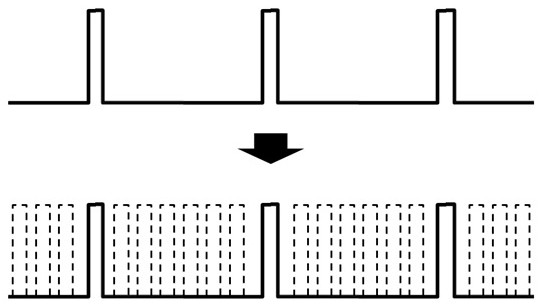A single-choice laser with continuously adjustable repetition rate derived from external trigger signal
A repetition rate and laser technology, applied in the field of optoelectronics, can solve the problems of non-continuity, inability to achieve continuous adjustment of low repetition rate, and non-observation, etc.
- Summary
- Abstract
- Description
- Claims
- Application Information
AI Technical Summary
Problems solved by technology
Method used
Image
Examples
Embodiment Construction
[0018] Below in conjunction with accompanying drawing and example the present invention will be further described: as Figure 1-4 As shown, an external trigger signal is derived to realize a single-selection laser with continuously adjustable repetition rate, and the coded signal or frequency signal provided outside the laser is collected; it is characterized in that the specific steps are as follows:
[0019] 1. According to the collected signal, it is sent to the FPGA, and the FPGA reads the rising edge of the external signal, and at the same time outputs a signal for driving the Q switch, and outputs the second signal after a certain time delay, and the second signal is used to drive the laser;
[0020] 2. The first signal drives the Q switch. This signal is synchronized with the rising edge of the external signal, so the repetition frequency of this signal is consistent with that of the external signal; the pulse width needs to be set appropriately. If the pulse width is t...
PUM
 Login to View More
Login to View More Abstract
Description
Claims
Application Information
 Login to View More
Login to View More - R&D
- Intellectual Property
- Life Sciences
- Materials
- Tech Scout
- Unparalleled Data Quality
- Higher Quality Content
- 60% Fewer Hallucinations
Browse by: Latest US Patents, China's latest patents, Technical Efficacy Thesaurus, Application Domain, Technology Topic, Popular Technical Reports.
© 2025 PatSnap. All rights reserved.Legal|Privacy policy|Modern Slavery Act Transparency Statement|Sitemap|About US| Contact US: help@patsnap.com



